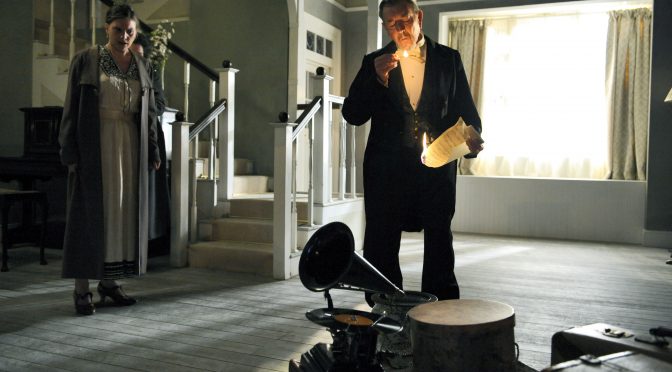Playwright Sarah Kane’s notoriety and early death make an assessment of any revival problematic. It may still be too soon to appraise Kane’s work objectively but it is disappointing that her first play to be staged at the National Theatre, under the aegis of director Katie Mitchell, embraces oddity and opacity to a degree that the piece unravels as a sensation-seeking mess.
My best guess is that the institution we’re taken inside of is a lunatic asylum – and that we are seeing it through the eyes of an inmate. The doctor is a torturer, the staff faceless figures, mutilating any patient professing love for another. To say the action is gruesome is an understatement: it includes rape, cutting off fingers and toes and an enforced sex change. Kane’s twisted imagination is haunting. But here, the imagery is delivered in so exaggerated a fashion that it’s more schlocky than shocking.
Kane’s Orwellian motifs are matched by Mitchell injecting touches of Pasolini. With a penchant for slow motion that makes the staging feel dated, and people walking backwards (Mitchell likes that), the whole thing is far too close to parody for comfort: we know it’s art since nobody is wearing shoes. Kane’s imagination is not matched by designer Alex Eales’ derelict-looking clinic – the play deserves more than distressed wall and few broken tiles.
The performances have a stilted quality that results from Mitchell’s heavy hand. There’s a lot of hard work, especially from Michelle Terry, whose character is grieving for a lost brother, and Peter Hobday, a sad soul whose love for his partner is tested via horrific torture. The performers feel like puppets and no character is elaborated enough to generate much interest. A frantic energy fills the show but is counter-productive, all the alarms and running around prove tiresome, while repetition makes things duller still.
Yet the biggest problems for the production are more basic. A lot of dialogue is difficult to hear. There isn’t much plot in Cleansed but distinguishing the characters is made trickier than it needs to be. And, if you are sitting at the sides of the auditorium, far too much action is out of sight. The music and sound design, by Paul Clark and Melanie Wilson, are interesting but strangely muted. All these frustrations added together make it tempting to just give up. Reports of people fainting at the show seem questionable – it’s more likely that they fell off their chairs when they fell asleep.
Until 5 May 2016
Photo by Stephen Cummiskey


